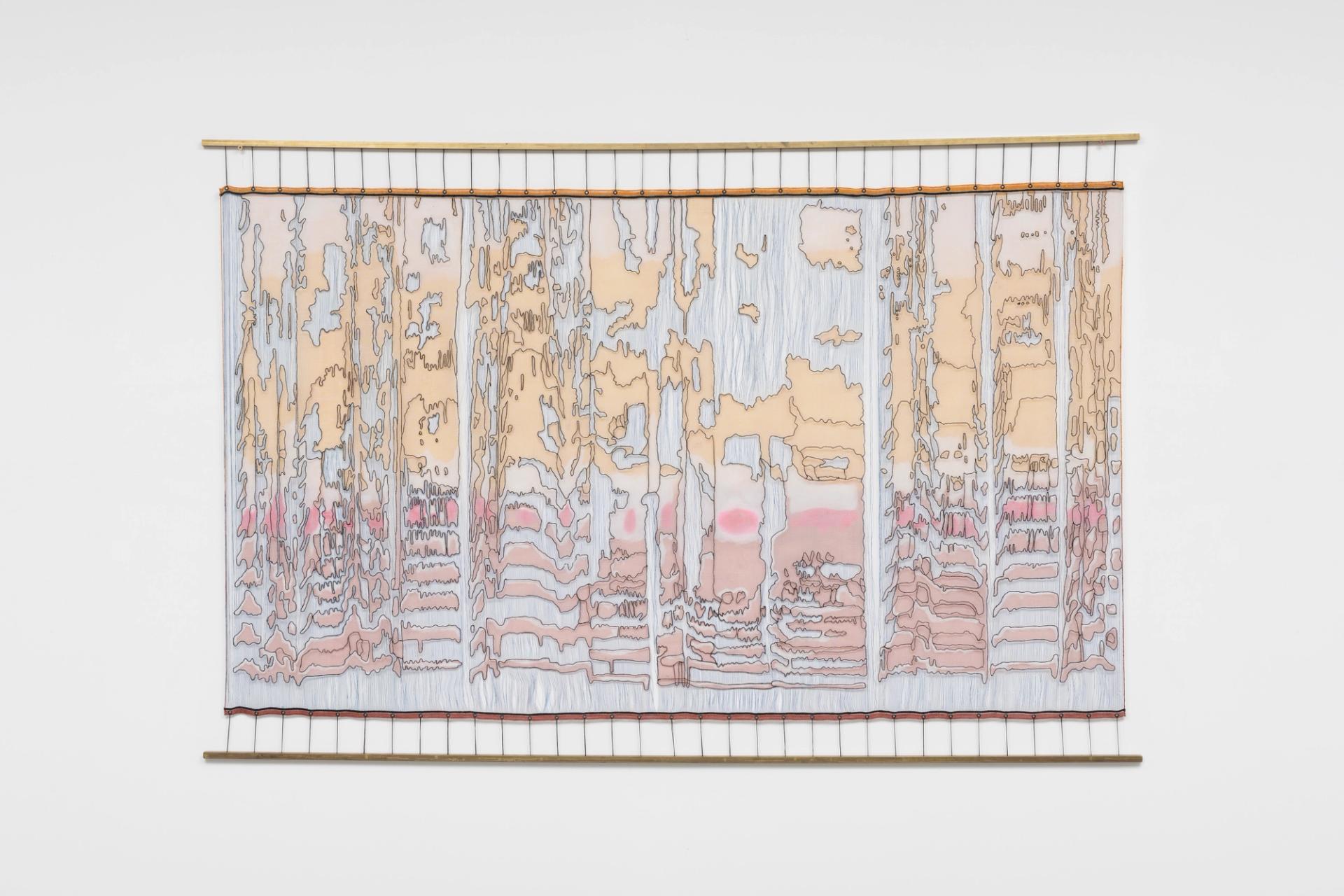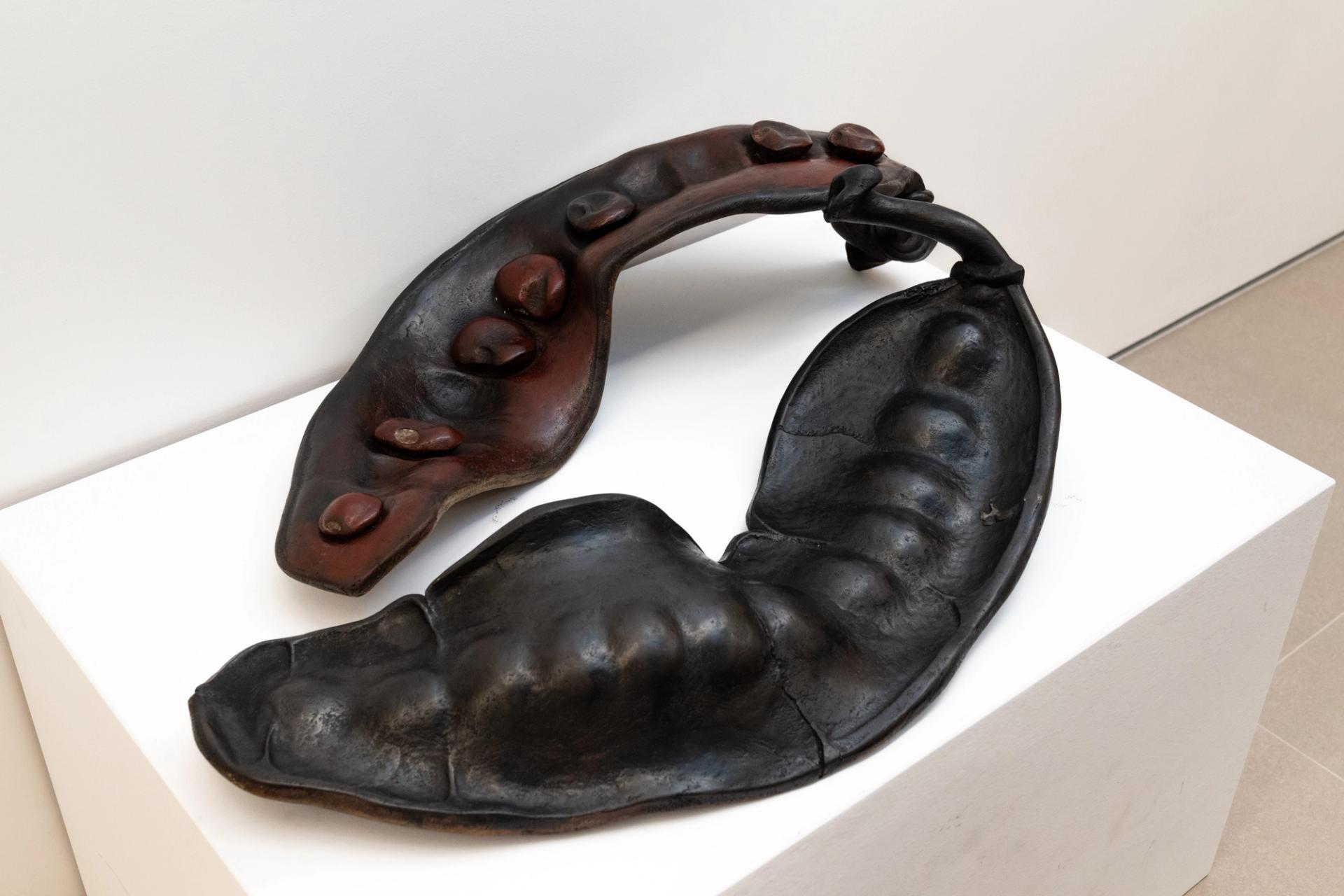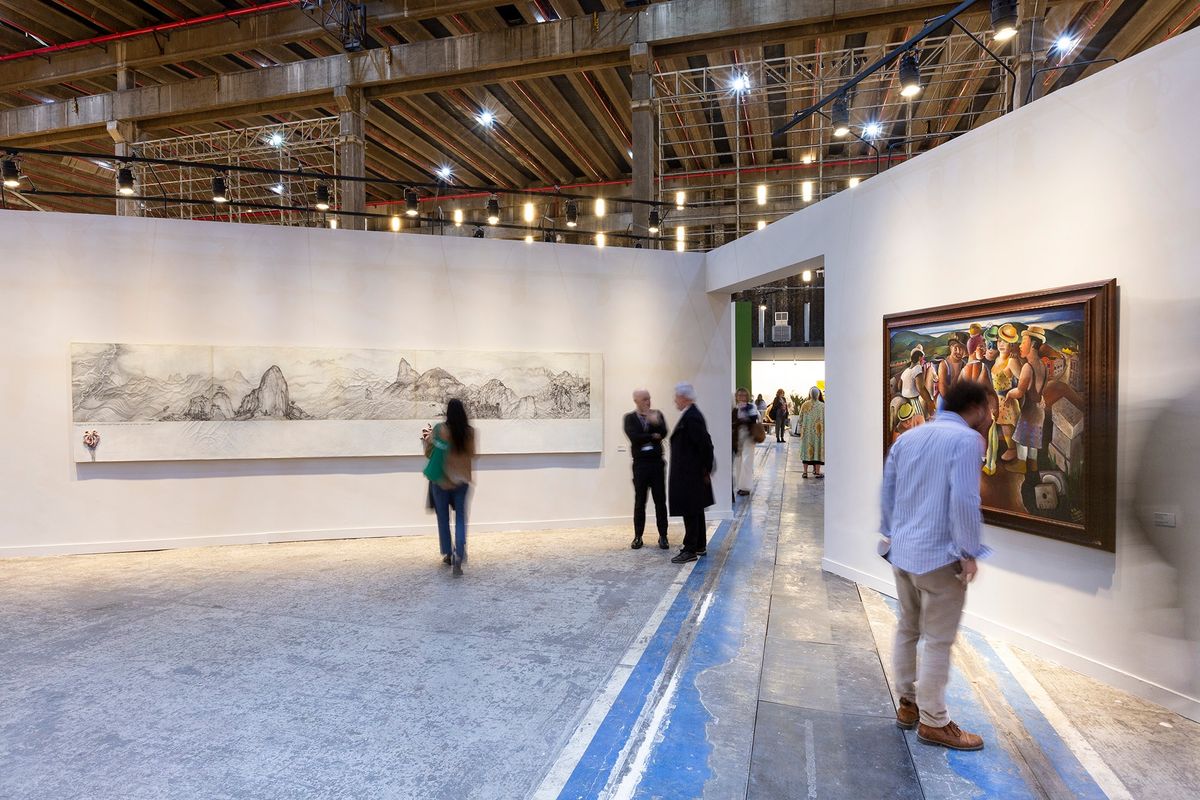Around five months after São Paulo hosted the fair meant to bring the global art world to Brazil, it is hosting the sister fair focused on bringing Brazil’s deep and diverse art scene into the light.
Rotas Brasileiras (until 1 September), now in its third edition, comes from the organisers of the larger, internationally inclusive SP-Arte fair staged each April. The main difference is that Rotas Brasileiras has a unique objective: to showcase the best established and emerging talent from across Brazil’s 15 states. This year, that objective has filled São Paulo’s Arca event space with 66 exhibitors offering works by around 250 artists.
"Rotas Brasileiras is an essential fair for anyone who wants to keep up to date with Brazilian art," Rodrigo Moura, the artistic director of this year's event, tells The Art Newspaper.
The 2024 edition of the fair (whose Portuguese name translates to “Brazilian routes”) introduces a new sector, dubbed Mirante (watchtower), which unites large-scale and rarely exhibited works by 16 artists.
"I wanted to bring a new sector, presenting works of large ensembles or of truly large dimensions—those works that go beyond the usual scale for conventional fairs," Moura says. One noteworthy example comes from the Pernambuco-born Tunga (1952-2016), whose practice spanning design, sculpture and performance made him one of the leading Brazilian artists of his generation; the piece, an array of golden brass strings held together by a lead chain and magnets, measures six meters in length.

An elevated view of the Mirante sector of Rotas Brasileiras 2024, with Êxtases (ecstasies), a 1987 sculpture by the late Brazilian artist Tunga, shown at bottom
Courtesy SP-Arte
One fair, many routes
According to Moura, who has served as the chief curator of El Museo del Barrio in New York since 2019, the Mirante sector was installed in the fair’s central square because the location provides “an elevated point on the trail route, where one can see the landscape and find other routes”.
And motivating visitors to explore different rotas is exactly what the organisers set out to do. "Routes of affection, routes of borders, routes of connection," says Fernanda Feitosa, the founder and executive director of SP-Arte. "This is an event that is focused on discoveries."
According to Feitosa, Brazil is a complex country with a complex history of cultural production. "There are many, diverse Brazilian identities. It is not a monotonous thing. We have the influences of colonisation and slavery—a country that has Indigenous people and popular contributions. There is not just one voice," she says.
The US-born, Asia-based collector and curator David Teplitzky, who describes himself as “a big fan of Brazilian art”, seconds Feitosa’s assessment. He tells The Art Newspaper that the fair has a “fresh feel” to it “whether one is looking at things that are 40 years old, or new works”.
"There's a different flavour here, and it's a chance to explore younger artists and things a little bit more out of the mainstream,” he adds. “I'm enjoying it tremendously.”
No matter which routes visitors take through the fair, however, Moura believes there are a few “must-sees” among this year's exhibitors.
"I would definitely go to the Millan gallery stand, showcasing Indigenous artists from different parts of the country; Gomide & Co gallery, with a very beautiful project in which Lenora de Barros pays homage to her father, the artist and designer Geraldo de Barros; and Contemporary Albuquerque gallery, with a new project by artist Flávia Bertinato, with previously unseen works.”

Vivian Caccuri, Descompressão Metal (metal decompression), 2023
Photo: Julia Thompson, courtesy Millan gallery
Close looking and close contact
Hena Lee, the general director of Millan gallery, says Rotas Brasileiras stands out from other fairs due to its unique approach, which “favours diversity, bringing galleries and artists from outside the Rio de Janeiro-São Paulo orbit, and facilitates contact with new productions and other agents in the circuit”. Millan has responded to this opportunity by bringing works from the Indigenous artists Daiara Tukano, Gustavo Caboco, Jaider Esbell and Joseca Mokahesi Yanomami on its stand.
Lee adds of the fair: "Its format also encourages closer contact between the public and the works on display, and differentiates Rotas from fairs with a more globalised character and a larger scale that always bring together the same galleries and artists."
Other gallerists agree that Rotas Brasileiras spurs unusually deep engagements between its exhibitors and visitors. Marga Pasquali, the owner of the Porto Alegre-headquartered Bolsa de Arte gallery, is participating here for the first time after exhibiting at several international expos. "It is beautiful in size, and we are able to do things that are harder to do at larger fairs, like interact with artists, gallery owners and collectors," she says of Rotas Brasileiras.
"Collectors here stop at the stands more, talk to gallery owners, to artists and try to understand what the artist's research is," Marco Antonio Lima, the owner of Lima Galeria in São Luis, Maranhão, tells The Art Newspaper.
Now exhibiting at Rotas Brasileiras for the third time, Lima, who also participates in SP-Arte each April, reinforces that the two fairs serve different purposes. He calls SP-Arte “a showcase for the world” with “much more visibility on a global level”, as curators travel from around the globe to take in the presentation. "Rotas, on the other hand, is focused on Brazil,” he says. “Here we are able to reach a larger number of smaller collectors, those who are just starting their collections."
Lima notes that Rotas Brasileiras also gives smaller galleries the opportunity to champion Brazilian artists who are relatively unknown even in the larger art markets within their own country, such as São Paulo.

Luis Carlos Lima Santos, Semente de Tamburi (tamburi seed), date unknown
Courtesy Lima Galeria
"Take 85-year-old sculptor Luis Carlos Lima Santos," the dealer says. "He is very well-known in Maranhão, where he was very active in the 1980s and 1990s. However, we didn't have the internet or social media to promote him, so he was restricted to Brazil's North and Northeastern states."
Rotas Brasileiras, Lima adds, “clearly shows that there is a Rio-São Paulo axis, but there is also a whole context outside this axis".


